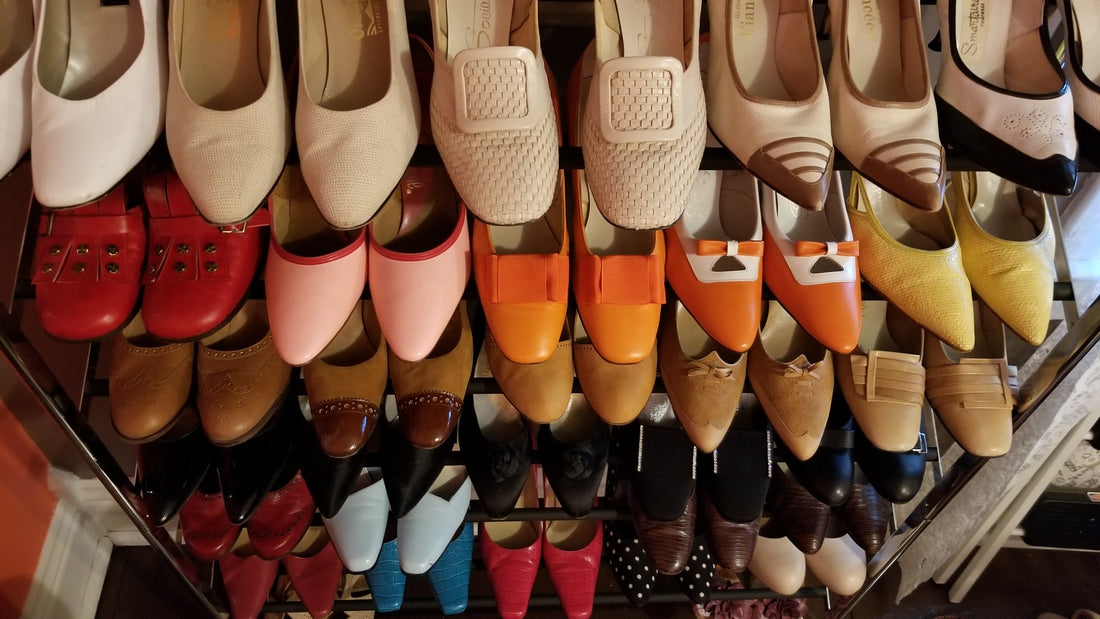
Stepping Through Time: The Fascinating History of Vintage Women’s Shoes
Share
The history of women’s shoes is both a story of evolving style and a mirror to social, technological, and cultural transformations. From elegant slippers to practical boots and dazzling heels, vintage women’s footwear has embodied the values and aspirations of every era.
: High heels trace their roots back to ancient civilizations. In ancient Greece, platform shoes signified social status, while certain high-heeled styles in Egypt were associated with ceremonial practices.
: Shoes of the Middle Ages prioritized comfort and durability, but by the Renaissance, women's shoes began to incorporate decorative and functional elements—such as rounded toes and Chopines (early platform heels).
: Changes in manufacturing allowed for more differentiation between men’s and women’s shoes. Women gravitated towards pumps and ornate heels, reflecting new standards of femininity and status.
: The mid to late 19th century saw the rise of the iconic Victorian boot—characterized by tall, lace-up or button-up silhouettes, sometimes with elastic insets known as “Congress boots.” Most were made of leather or occasionally luxurious materials for evening wear. Delicate slippers with low heels were worn for dancing, while sturdy boots, often in black or two-toned leather, reigned for day-to-day life.
- : These boots offered much-needed ankle support and protection on city streets still in their infancy. The long, narrow silhouettes were a reflection of broader ideals of feminine beauty—designed to elongate and slim the foot.
- : Initially, women’s shoes were handmade by cobblers, but the spread of mail-order catalogs in the late 1800s made stylish footwear more accessible.
: Women embraced new shoe styles (e.g., heeled Oxfords, boots with French heels, and multi-strap designs). These shoes offered improved comfort and elegance, marking a shift toward practicality without sacrificing beauty.
: The excitement of the 1920s brought dramatic changes. As hemlines rose, footwear came to the forefront: Mary Janes, T-strap shoes, and spectator pumps appeared, often in bold colors and with decorative details like buckles and beadwork. Dance-friendly, strappy styles reflected the era’s new freedoms for women—perfect for flappers and the Charleston.
- : Patent leather, satin, and metallic shoes matched the opulence of Art Deco fashion, while new manufacturing methods enabled the mass production of stylish, affordable shoes.
: The 1930s and 1940s introduced sultry slingbacks, heeled sandals, and peep-toes. Short skirts and bare ankles became popular, accompanied by shoes with pointed toes and ankle straps.
- Postwar Practicality and Pizzazz: In the late 1940s and 1950s, pumps, loafers, and kitten heels dominated both high fashion and daily life, adapting vintage elegance for the modern woman.
Vintage women’s shoes are more than just beautiful relics; they’re tangible links to past lives and stories. Their evolving silhouettes, materials, and decorations reveal each era’s priorities—be it form, function, or the pursuit of beauty above all else. Exploring their history offers a deeper appreciation for the artistry that continues to shape women’s footwear today
